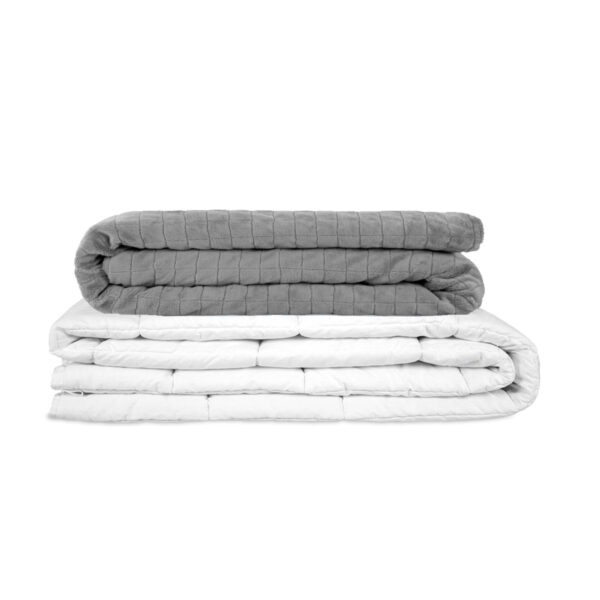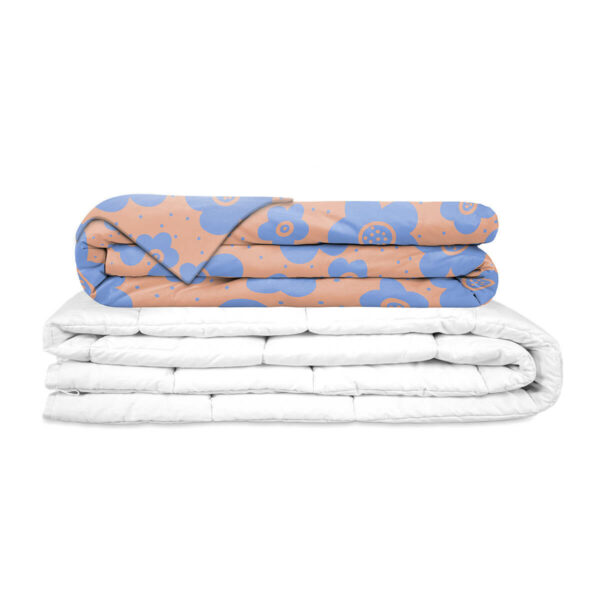
Katharina Meier-Batrakow Psychologist and Child and Adolescent Psychotherapist at the Counselling Centre Bremen
„Hugging someone to comfort them, hugging a child to calm them down – these are proven methods to reduce stress.”
How did you come up with the idea of using therapy blankets?
When I was working in the counselling centre for child and adolescent psychiatry, I observed stress blankets for children with various mental illnesses and excess stress. The blankets were used there, among other things, as part of occupational therapy (part of the treatment concept) or in the patients’ daily lives.
With guidance and a little ‘practice’, children can benefit from the calming and relaxing effect of the therapy blankets and use them, for example, in situations of high tension.
What do you think about using a weighted blanket?
After our daughter was born, my husband and I had many sleepless nights for several months. Our daughter’s sleep normalized after a time. On the other hand, my sleep was restless all the time – as if my body was still tense and ‘on standby’. The process of returning to restful sleep continues down to this day. I feel and see (through sleep tracking apps) that my sleep is still shallow, and I often wake up briefly. As a result, I am often sleepy in the morning. Thanks to the weighted blanket, I noticed an improvement after only three weeks. I have a more peaceful deep sleep and generally a shorter waking phase. Of course, this didn’t happen overnight – it also took me a few days to get myself and my body used to the weight. In the meantime, my husband and I ‘argue’ about who is allowed to sleep under the weighted blanket tonight.
My daughter also has her own weighted blanket. First of all, she thinks the cover motifs are really great, and she loved her blanket from the very beginning. She didn’t mind the extra weight and called her blanket a ‘cuddle blanket’. What I find interesting is that she sees the extra weight as a ‘cuddle’. With the help of the blanket and a proper sleep ritual, she can relax and no longer squirms as much, making it easier for her to fall asleep. Even as a baby, she always curled up, which is probably similar to ‘big babies’.
In which medical areas do you think it is worthwhile to use weighted blankets? Where are therapeutic blankets already being used successfully? And where else do you see potential/need?
In my opinion, using therapeutic blankets is possible in many different ways and every age range, right from early childhood. We live in a world with lots of stimuli. Everything moves fast and often involves stress and pressure. And it starts with young children in primary school and even in kindergarten. Here, many people benefit from moments of peace during the day and restful sleep.
Therefore, I see the use of stress blankets not only in the clinical area, for example, in children’s clinics, therapy rooms, care facilities, but there is also potential in the subclinical and preventive area. I think of people who have difficulty falling asleep and staying asleep at night and people subject to anxiety both at work and in their personal lives. Persistent stress and poor sleep are known risk factors for physical and mental illness.
And of course, as in my example, parents who want to return to deeper and deeper sleep after a long ‘stress phase’. A prolonged phase with little sleep is simply physical stress and should be dealt with first.
Of course, it is crucial not to treat the therapy blanket as a ‘panacea’ – constant lifestyle adjustments are also essential if you are under a lot of stress and have trouble sleeping. Yet a therapy blanket can contribute to ‘therapy’ and be a building block to increasing your quality of life.
What is your conclusion from a personal and medical point of view?
Especially in these coronavirus-related times, physical contact between people is even more limited than before. However, we should not forget that our skin and nervous system can react very positively to physical contact in stressful situations. Hugging someone or holding their hand when they need comfort, holding children to calm them down – these are tried and true ways to reduce stress. A therapeutic blanket simulates, among other things, this physical sensation and is recommended for both medical or therapeutic and private use because of this effect. Furthermore, you can customise the weighted blankets with different weights, sizes, and design options. Some models contribute to well-being for personal use in the home and hospitals, care facilities, and therapeutic practices.







